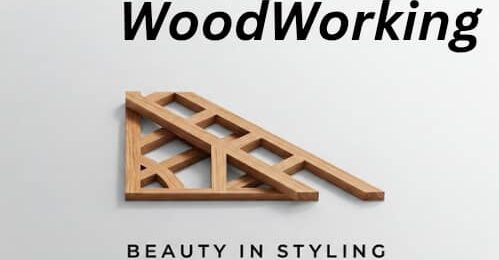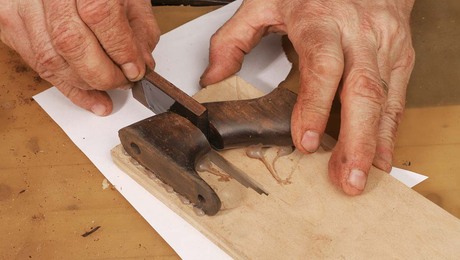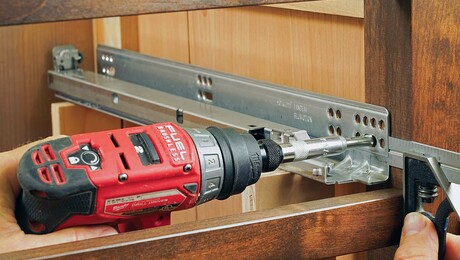When is Bevel Up Best?
Any discussion of hand planes must lead with the basic truth that unless the iron is incredibly sharp, it will never work well. Just as important as the degree of sharpness, however, is the angle of attack of the cutting edge into the wood being planed.
For example, when planing end grain, a low angle of attack makes it easier to push the plane and leave a glasslike surface. Conversely, when planing face grain and edge grain, especially in highly figured woods where the grain direction is constantly switching, a higher angle of attack is best because it leads to less tearout. There is a trade-off, however, since with the higher angle the plane will be harder to push through the wood.
Bevel down
The bevel of the iron in traditional bench planes faces down, which means the angle of attack is solely a function of the bed or frog angle. Early plane makers quickly determined that an angle of attack of 45° was a good middle ground, being relatively easy to push and able to produce a glass-smooth surface in most woods. For those harder-to-plane woods such as highly figured tiger maple or quartersawn white oak, bench planes with a higher frog angle resulted in a smooth, tearout-free surface but were harder to push.
Historically, some bench planes were made with the York pitch frog at 50°, the Middle pitch frog at 55°, and even the “half pitch” or Cabinet pitch at 60° to accommodate furniture makers who often worked with hard-to-plane woods.
Most bevel-down bench planes have chipbreakers, which improve their performance by helping stabilize the iron and minimize tearout. Perhaps most importantly, bench planes also have significant mass.
Bevel up
Unlike on traditional bench planes, the bevel on a block plane faces up. This means that the plane’s angle of attack can be controlled by varying the bevel angle, making it simple to change the angle of attack from one extreme to the other.
The angle of attack on block planes is a combination of their bed angle, which is typically 12° or 20°, and the iron’s bevel or microbevel angle. The typical microbevel of 30°, combined with a 12° bed, yields an angle of attack of 42°—which is pretty close to the standard 45° of a bench plane. I sharpen my “everyday” block plane like this, and it is fine for small jobs like planing a quick chamfer or flushing a protruding joint.
A microbevel increased to 45°, when combined with the 12° bed, produces an angle of attack of 57°. My second block plane utilizes the 45° microbevel exclusively. This block plane is perfect for situations such as chamfering an edge when the planing direction is a best guess. Often the grain direction of one surface can be opposite the grain direction of the intersecting surface.
The ultra-high bevel angle allows me to plane with or against the grain safely, so I always get a clean, crisp chamfer. Additionally, I use this plane for leveling any inlay or for performing any other small planing task where I’m concerned about tearout.
Tackling end grain
Sharpening a block plane iron at a low angle like 25° and then combining it with a 12° frog results in an angle of attack of 37°, which is great for planing end grain but not so great for planing most face grain.
The downside of standard block planes is their small size and the consequent lack of mass. They do well for very light planing of end grain in easy woods like pine or cherry. When faced with planing a lot of end grain or any heavier-duty task like planing 8/4 or 12/4 maple or white oak, I turn to my heavyweight bevel-up planes.
Block plane on steroids
Years ago, Lie-Nielsen Toolworks and other companies started manufacturing planes based on the Stanley No. 62. Introduced in 1916, this plane was developed specifically for flattening end-grain butcher blocks. It has everything you need for that daunting task: a 12° frog, a heavy cast-iron body, and a thicker-than-normal iron. Currently there are any number of bevel-up planes available in various sizes. All of them are essentially large block planes. These planes combine significant mass with the flexibility to alter bevel angles easily.
I can use a low-angle bevel for heavy end-grain work or, most importantly, with a microbevel angle of 45°, I can create an ultra-high angle of attack of 57° for working hard-to-plane woods such as quartersawn white oak or crotch walnut.
I use these bevel-up planes, in particular my Lie-Nielsen low-angle smoother, when I’m planing swirly tearout-prone face grain or planing a lot of end grain. I have separate irons sharpened for each type: 25° for end-grain jobs and 45° for hard-to-plane face-grain work.
The ultra-high-angle bevel on these massive planes has consistently given me results far better than those I’ve gotten from my standard bench planes, including my old No. 4-1/2 with the York pitch, a tool specifically made to plane difficult wood.
Bob Van Dyke is the founder and director of the Connecticut Valley School of Woodworking in Manchester, Conn.
Fine Woodworking Recommended Products

Starrett 12-in. combination square
This accurate, robust, well-machined, easy-to-read combo square is as great as ever.
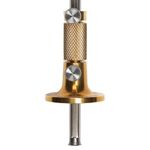
Tite-Mark Marking Gauge
These gauges can be easily and precisely adjusted with one hand, which allows you to set the tool while holding a ruler or workpiece in the other. The quality is exceptional, and all have sharp cutters that offer great visibility.
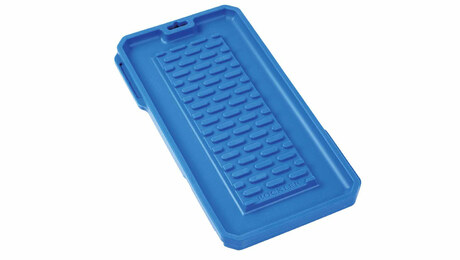
Rockler Silicone Sharpening Stone Tray
At 6 in. wide, with plenty of length for standard waterstones, they have grippy dimples that keep the stones stable and level, plus wide channels all around to catch the water. They also lock together, side by side, so I can have all of my stones available at the same time.
Sign up for eletters today and get the latest techniques and how-to from Fine Woodworking, plus special offers.
Download FREE PDF
when you enter your email address below.
